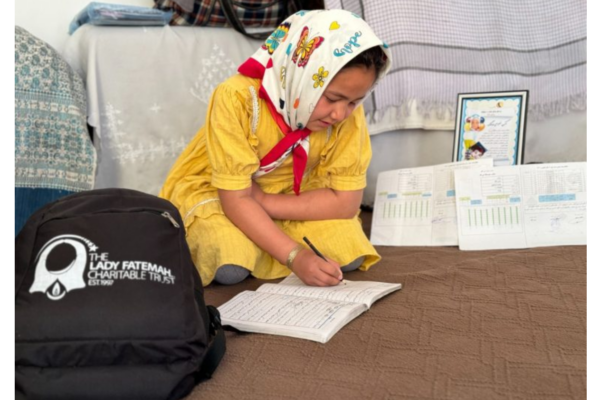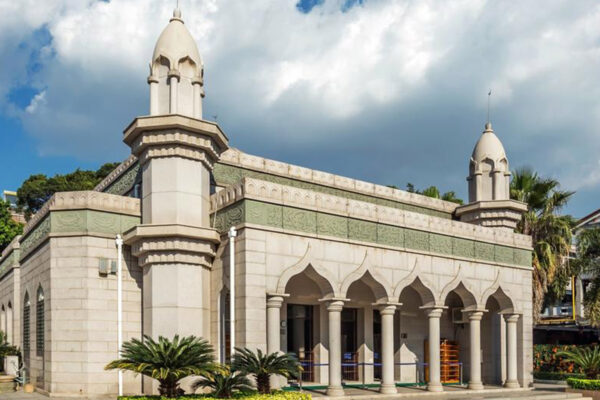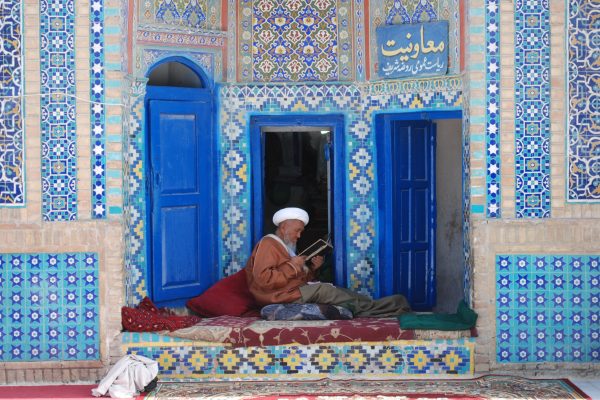The average Afghan was certainly not wearing miniskirts and attending Kabul University, nor were they taking fashionably-dressed vacations to the mountains in imported cars. This was a very small urban elite and middle-class segment of society shown in the pictures of Kabul in the 1970s, and one that did not reflect the conditions of the majority of Afghans.
The Weaponization of Nostalgia: How Afghan Miniskirts Became the Latest Salvo in the War on Terror
The average Afghan was certainly not wearing miniskirts and attending Kabul University, nor were they taking fashionably-dressed vacations to the mountains in imported cars. This was a very small urban elite and middle-class segment of society shown in the pictures of Kabul in the 1970s, and one that did not reflect the conditions of the majority of Afghans.
This article was originally written for Ajam Media Collective by author Alex Shams in 2017. You can find the original article here.
The debate over Afghan women’s miniskirts has become the latest salvo in the War on Terror.
Last month, Donald Trump announced that the US would be extending its military occupation of Afghanistan, reversing a stance he has held for years demanding a rapid pull-out. Instead, the country will see a continuation of the endless war, a war that has left tens of thousands dead but which has failed miserably to achieve any of its goals – like securing peace for the Afghan people.
Now, it looks like the war could be increasingly privatized – and Trump has shown interest in persuading Afghanistan’s government to clear the way for US mining companies to exploit the country’s untapped mineral deposits – valued at $1 trillion – as payment. Like the Iraqi oil loot seized after the 2003 US invasion, it is hard to imagine a more brazen form of armed robbery.
How do miniskirts play into this picture?
US national security adviser McMaster showed Donald Trump 1970s-era photos of Afghan women wearing miniskirts in order to convince him to maintain the 16-year-long US military presence in the country, the Washington Post reported this week.
This isn’t the first time Afghan women’s clothing has been used to justify war. Back in 2001, Republicans took up the blue burqa worn by many Afghan women – and enforced as law by the Taliban, then in power – as a symbol of women’s oppression. Continuing a long history of complicity with imperialism, some feminists began to rally around US guns and missiles as the best hope of “freeing” Afghan women – apparently not considering that bombing a country and killing thousands of people hardly creates much of a path to freedom.
Like the Europeans who supported the “civilizing mission” of colonialism before them, this new generation of colonial feminists jumped on the bandwagon to “free” Afghanistan’s women without considering what liberation at gunpoint would deliver.
Sixteen years later, the US is still occupying Afghanistan, and women are hardly freer. Indeed, heavy-handed US tactics have isolated large segments of the population and fueled the Taliban insurgency, which is now accompanied by an ISIS insurgency as well. While there are bright spots of progress across the country, these are often in spite of the US occupation and its support for the corrupt central government.
So what do photos of Afghan women’s miniskirts have to do with all of this?
In recent years, photo essays purporting to “reveal” how was Afghanistan was before the war has circulated widely, showing women and men in trendy 1970s outfits studying on the campus of universities in Kabul, taking trips to mountains and rivers, and generally wandering the streets happily.
Often, these essays are accompanied by descriptions of how Afghan women prospered during the 1960s and 70s under the rule of Ahmed Zahir Shah or his cousin who took power in a 1973 coup, or following the triumph of the socialist Saur Revolution in 1978, especially before the Soviet invasion in 1980 engendered militant resistance to the new leaders and the US started supporting the Afghan mujahedeen against the USSR’s military. Sometimes, a point is made about how the US sent money, expertise, and weapons to the groups that would eventually come to comprise the Taliban and Al-Qaeda, noting how these interventionist policies led to a cycle of violence that has not ended since.
For Afghans, these articles are an important way to remember a past when the future ahead seemed promising. In the photos, Afghanistan appears on a path toward a future of modernity, secularism, and development, a path that was interrupted by revolution, war, repression, and occupation. These albums are a way to consider an alternative future, how things could have turned out, if it had not been for the foreign interventions, wars, the rise of militias, the triumph of the Taliban, and so on.
Given the myriad problems facing modern Afghanistan, it is not surprising that for many Afghans these photo essays offer a sense of pride and hope. Sharing these photos is a way to remember an oft-forgotten past, a time before war changed the country beyond recognition. For Afghans, this is not just about nostalgia; it’s about remembering that just as Afghanistan hosted dreams of a better tomorrow in the past, it can host those dreams today. It’s about remaining optimistic and envisioning a future where the pain of war has receded far into the past.
As Mohammad Qayoumi, who published a book of old photogaphs explained: “Remembering Afghanistan’s hopeful past only makes its present misery seem more tragic. But it is important to know that disorder, terrorism, and violence against schools that educate girls are not inevitable. I want to show Afghanistan’s youth of today how their parents and grandparents really lived.”
Defining ‘Freedom’
But for the broader English-speaking public, the point of these articles is often not reducible to dreams of a better future, nostalgia nor historical learning – especially when one considers how few other articles about Afghanistan on any other topic manage to go viral. Why is it that non-Afghans only care to learn about Afghanistan when there are pictures of women in miniskirts involved?
The point of these essays is to suggest that before 1980, Afghanistan was on its way to becoming a “westernized” society. Some even note that if the US hadn’t supported Islamist extremists, it might have remained one. This appears to be how the images were explained to Trump, to suggest he shouldn’t give up on Afghanistan because Afghans could, essentially, be “civilized” again.
The idea that these photos reveal a time when “women were free” seems to equate “women’s freedom” with miniskirts. This is essentially the same standard, albeit in reverse, used by those who measure women’s freedom in terms of how covered women are.
Instead of defining women’s freedom in terms of social, political, and economic rights – like literacy, access to healthcare, and so on – both positions reduce “freedom” to how much skin is showing or not showing. A photograph becomes all it takes to decide that women are free or not free.
The problem is not that these images are inaccurate. Indeed, some people in Afghanistan did live the lives of those pictures. But this was a tiny segment of the population, comprising a Kabul middle class that enjoyed the support and patronage of a King who built a bubble of prosperity in Kabul but kept the rest of the country in utter poverty – part of the reason for the 1973 coup and the 1978 Revolution.
In 1979 – at the end of Afghanistan’s “Golden Age“ – only 18% of Afghans were literate – and the average life expectancy was only just above 40, meaning that half of Afghans died before that age.
The average Afghan was certainly not wearing miniskirts and attending Kabul University, nor were they taking fashionably-dressed vacations to the mountains in imported cars. This was a very small urban elite and middle-class segment of society shown in the pictures of Kabul in the 1970s, and one that did not reflect the conditions of the majority of Afghans.
The pervasiveness of these photos and their spectacularly misleading claims to be representative of Afghan life in the 1970s contribute to the idea that only when women have thrown off their hijabs can they truly be free, that an Afghanistan without burqas is an Afghanistan where everything is good and free.
Few of these articles mention that veils were widespread in Afghan society outside of that tiny elite – or that, since 2001, many Afghan women wearing veils have attended schools, universities, and become gainfully employed.
These articles simplify the slippery realities of the past – that pre-1978 Afghanistan was a largely impoverished place and that Soviet warfare as well as US-backed mujahedeen warfare were both violent and had negative consequences for women – and instead present a narrative suggesting that Afghan society was once hijab-free and could (and should!) return to that reality.
This narrative, however, is not only misleading – it is also extremely dangerous, as shown most clearly by its use to convince Trump of the justness of endless warfare. This narrative suggests that the despair that continues to overwhelm Afghan society is rooted not in the widespread corruption, lack of economic opportunity, obliteration of large swathes of the built and natural environment, drone warfare that has left thousands of innocents dead, or anything else that is related to the political, economic, and social realities that confront 35 million Afghans trying to live their lives – but instead in the lack of miniskirts that fail to grace Kabul’s streets.
No one asks why the Americans have failed to even rebuild those streets in the background in these sixteen years. By refocusing the debate on women’s clothing yet again, broader questions around the problems facing Afghanistan become elided – and the discussion returns to a simplistic dichotomy between Islam and secular modernity.
It’s useful to note that the weaponization of nostalgia is not limited to Afghanistan, but is common in countries across the region.
Consider photographs from Iran from before the Islamic Revolution, which are often used to depict a time when women were free to wear miniskirts – and thus supposedly “free” in the broadest sense of the word. In Iran, as well, these pictures tend to show an extremely distorted and limited view of Iranian society. In 1979, a small minority of Iranian women attended college – compared to 55% today – and while there certainly were bars and clubs in big cities like Tehran, the majority of Iranians lived in rural areas, did not wear miniskirts, and did not regularly attend cabarets.
The same goes for Iraq. Photographs of the 1970s are frequently passed around to show a time before Saddam Hussein, war, sanctions, and US invasion. But the photographs of women in miniskirts in Baghdad hardly speak to a broader reality for the majority of Iraqi people, who were living in agricultural areas at the time. Nor do they speak to the repressive policies of the Baathist state, which were in full swing at the time.
But these photo essays are not concerned about these kinds of statistics or messy details. These essays rarely offer statistics about education, employment, or much else. The main point is the visuals: the miniskirt, the free walking around. And we are thus offered a past that is reducible to the length of a woman’s skirt – and not any of the context or conditions in which the vast majority of women (or men) actually lived.
So were women “freer” back in the 1970s in these countries? It depends how you measure it, of course. But the point is that miniskirts or lack thereof do not prove the existence of women’s freedom or civilization in a country. Their use to convince Trump to continue the occupation of Afghanistan reveals the continuing dangers of this facile equation of women’s dress with freedom as well as the weaponization of nostalgia.
This nostalgia is dangerous because it erases the very real material and social inequalities that existed in the past and that need our attention in the present. These photo essays too often present a misleading view of the past that takes elite history as if it represented the nation as a whole, thus obscuring the reality of most people’s memories of the past and instead replacing them with a narrative that equates freedom with clothing and nothing more.





